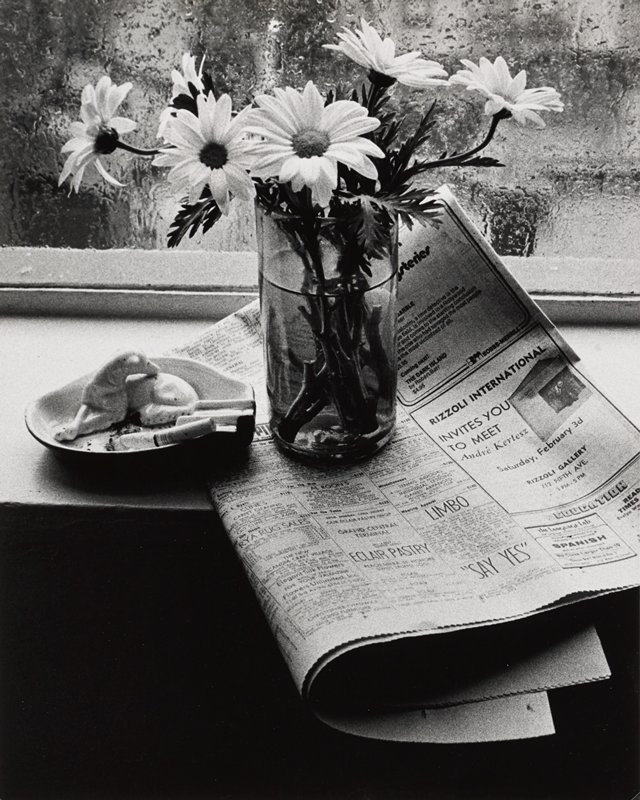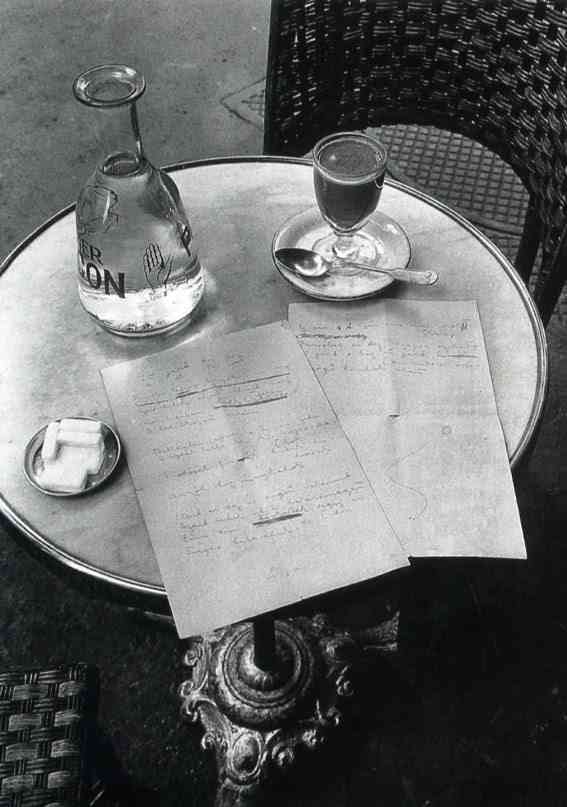
“Soy un amateur y pretendo serlo durante el resto de mi vida.” – André Kertész.
//
“I am an amateur and I intend to stay that way for the rest of my life.” – André Kertész

“Soy un amateur y pretendo serlo durante el resto de mi vida.” – André Kertész.
//
“I am an amateur and I intend to stay that way for the rest of my life.” – André Kertész

“La técnica es solo lo mínimo en fotografía. Es por lo que hay que empezar. Creo que debes ser un técnico perfecto para expresarte como quieras y luego puedes olvidarte de la técnica”. – André Kertész.
//
“Technique is only the minimum in photography. It’s what one must start with. I believe you should be a perfect technician in order to express yourself as you wish and then you can forget the technique.” – André Kertész.

“Una buena foto transmite algo, no sólo a los ojos, sino también mucho más adentro. Los ojos solos no bastan; siempre se hallan entre la imagen y el alma. Yo no planifico salidas para tomar fotos. Siempre llevo mi cámara conmigo y cuando veo cosas que atrapan mi mirada, me paro a fotografiarlas. Pero a menudo no saco ni siquiera una sola foto.” – André Kertész
//
“A good photograph conveys something, not only to the eyes but also much deeper. The eyes alone are not enough; they are always between the image and the soul. I do not plan outings to take pictures. I always carry my camera with me and when I see things that catch my eye, I stop to photograph them. But often I do not get even a single picture.” – André Kertész

“Soy un aficionado y pretendo permanecer así durante el resto de mi vida.” – André Kertész
//
“I am an amateur and I intend to stand that way for the rest of my life.” – André Kertész

“Todos pueden mirar, pero no siempre ven. Yo nunca calculo ni considero:
Veo una situación y sé cuando está bien.”
— André Kertész
//
“Everyone can look, but do not always see. I never judge nor estimate:
I see a situation and know when it is right.”
— André Kertész

“La cámara es mi herramienta. A través de ella doy una razón a todo lo que me rodea.” – André Kertész
//
“The camera is my tool. Through it I give a reason to everything around me.” – André Kertész






“Para llevar a mi retirada a otro nivel, he decidido que debo comprar una de estas típicas mesas de café parisino para que pueda de alguna forma sentir como si hubiera regresado a mi propia casa.” – André Kertész
//
“To take my withdrawal to another level, I’ve decided I must buy one of these typical Parisian cafe tables so that I can at least somewhat feel like I’m back there even in my own home.” – André Kertész

Durante sus viajes por Budapest, Kertész se encontró esta situación y utilizó su ojo fotográfico para encuadrar la imagen con gran acierto. La fotografía, dividida en secciones horizontales de madera, tela y hierba (y bisecada verticalmente por el hombre y la mujer, de pie juntos), presenta gran forma y simetría. Las líneas de la madera y la tela quedan realzadas por la ropa y los tocados de la pareja, que con estilo y textura libres, aparecen en relieve sobre las lineas verticales del tablaje vertical.
La fotografía que André Kertész tomó de una pareja mientras miraban a través de una abertura en la pared de un circo, posee todo el misterio del mejor documental callejero. La pareja es ajena a la presencia del fotógrafo y está tan fascinada por lo que pasa en el interior que casi podemos visualizar la escena oculta. Ocurre algo tras la fotografía que vemos, pero Kertész se conforma con relatar esta sencilla historia de curiosidad y concentración. Demuestra lo que se puede conseguir con una aguda observación y fotografías hechas a gran velocidad. (Val Williams)
“Para mí, la cámara era una pequeña libreta, un cuaderno de bocetos. Fotografiaba aquello que me rodeaba: seres humanos, animales, mi hogar, las sombras, campesinos, la vida circundante. Siempre fotografiaba lo que el momento me pedía.” – André Kertész
//
During his travels in Budapest, Kertesz found this situation and used his photographic eye to frame the picture with great success. The photograph, divided into horizontal sections of wood, fabric and grass (and vertically bisected by the man and woman standing together) presents great shape and symmetry. The lines of the wood and fabric are enhanced by the clothing and headgear of the couple that with free style and texture appear in relief on the vertical lines vertical planking.
The photograph André Kertész took to a couple as they looked through an opening in the wall of a circus, has all the mystery of the best street documentary. The couple is oblivious to the presence of the photographer and are so fascinated by what goes on inside that we can almost see the hidden scene. Something happens behind the photo we see, but Kertész conforms to tell this simple story of curiosity and concentration. He demonstrate what can be achieved with an acute observation and photographs taken at high speed. (Val Williams)
“For me the camera was a little notebook, a sketchbook. I photographed what surrounded me: humans, animals, my home, shadows, peasants, the surrounding life. I always photographed what the moment asked me.” – André Kertész

“Yo simplemente paseo, observando el tema desde varios ángulos hasta que los elementos de la imagen se organizan en una composición que agrada a mi ojo.” – André Kertész
//
“I just walk around, observing the subject from various angles until the picture elements arrange themselves into a composition that pleases my eye.” – André Kertész